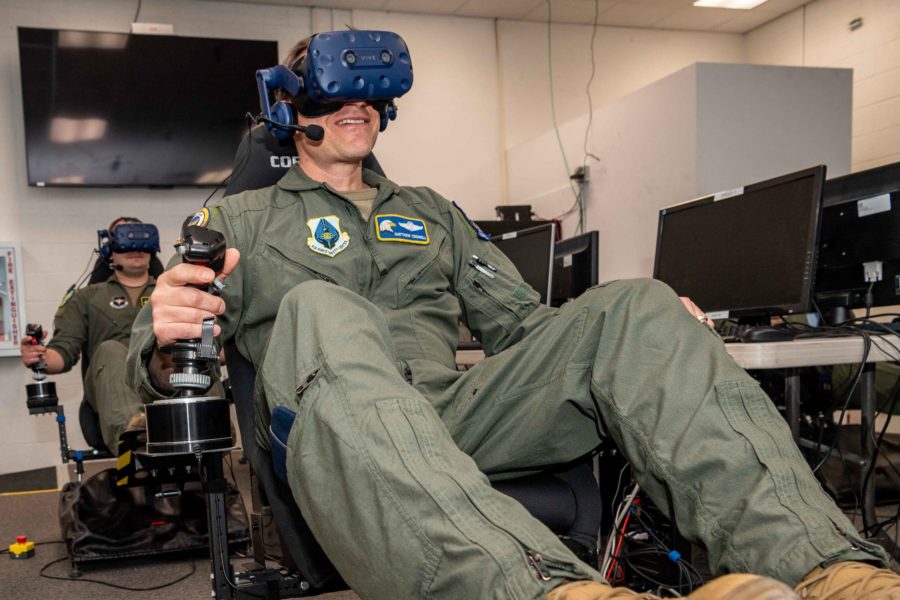The Air Force Research Laboratory has already experimented with airborne lasers on the virtual battlefield. Now the lab’s latest test has combined those lasers with next-generation kinetic weapons to see how they could work together.
Seven pilots, weapon systems officers, and air battle managers took part in one of AFRL’s Directed Energy Utility Concept Experiments from Jan. 24 to 28 at Kirtland Air Force Base, N.M. The DEUCE series of experiments aims to test how operators use directed energy weapons in simulated situations. This most recent experiment, however, went a step further in trying to explore “synergies between directed energy and kinetic concepts,” according to an AFRL release.
The experiment, dubbed the Directed Energy and Kinetic Energy Directed Energy Utility Concept Experiment, or DEKE DEUCE, featured collaboration between AFRL’s Directed Energy and Munitions directorates as well as work by the Office of Naval Research.
“An urgent need exists to rapidly field and integrate viable next-generation weapons, both [directed energy] and [kinetic energy], in response to increasing capabilities and aggressive intentions from our adversaries,” said Darl Lewis, the DEUCE lead and wargaming principal investigator. “This DEUCE focused on identifying capability and joint integration gaps that can be addressed by systems under consideration, as well as potential future tactics and procedures.”
Using computers and simulators, Airmen were placed in situations in which the mission called for the combined use of directed and kinetic capabilities. Specifically, the simulations focused on “an airborne high energy laser pod and two future kinetic concepts,” per the AFRL release.
All three weapons were simulated on an F-15, Lewis told Air Force Magazine.
“Experiments like the DEKE DEUCE allow critical collaboration between the warfighter and the developers of our future capabilities,” said Col. Matthew Crowell, chief of aviation safety at the Air Force Safety Center and the leader of five aviators who took part in the experiment. “It provided an amazing opportunity for both communities to learn from each other and keep our Air Force out in front of our peers with technology.”
A previous version of DEUCE simulated a weapon similar to the Self-Protect High-Energy Laser Demonstrator (SHiELD).
The conceptual laser simulated as part of DEKE DEUCE, called the Advanced-Flight High Energy Laser (AF-HEL), “builds on the lessons learned during several previous high energy laser programs. However, it is not expressly tied to any single predecessor,” Lewis told Air Force Magazine. Data gleaned from DEKE DEUCE and similar experiments will help to “drive requirements for a physical system that is optimally aligned with the needs of the warfighter,” Lewis said.
AFRL’s release did not specify which future kinetic concepts were tested in the experiment, but in response to an Air Force Magazine query, Lewis said the kinetic systems were used in both defensive and offensive capacities.
“DEKE DEUCE gave the Munitions Directorate a great opportunity to put our kinetic weapons concepts in front of the warfighter,” said Rusty Coleman, the unit’s technical adviser for the modeling and simulation team. “It allowed us to see novel employment concepts that we could not have seen otherwise. The pilots virtually flying the aircraft provided feedback beyond what we could have gotten from any other venue.”
DEKE DEUCE also featured the AFRL’s Weapons Engagement Optimizer, “an artificial intelligence-based battle management system” aimed at analyzing data and helping decision-making in complex battlefields, as well as the Navy’s ELEKTRA, a similar AI-based battle management concept.


